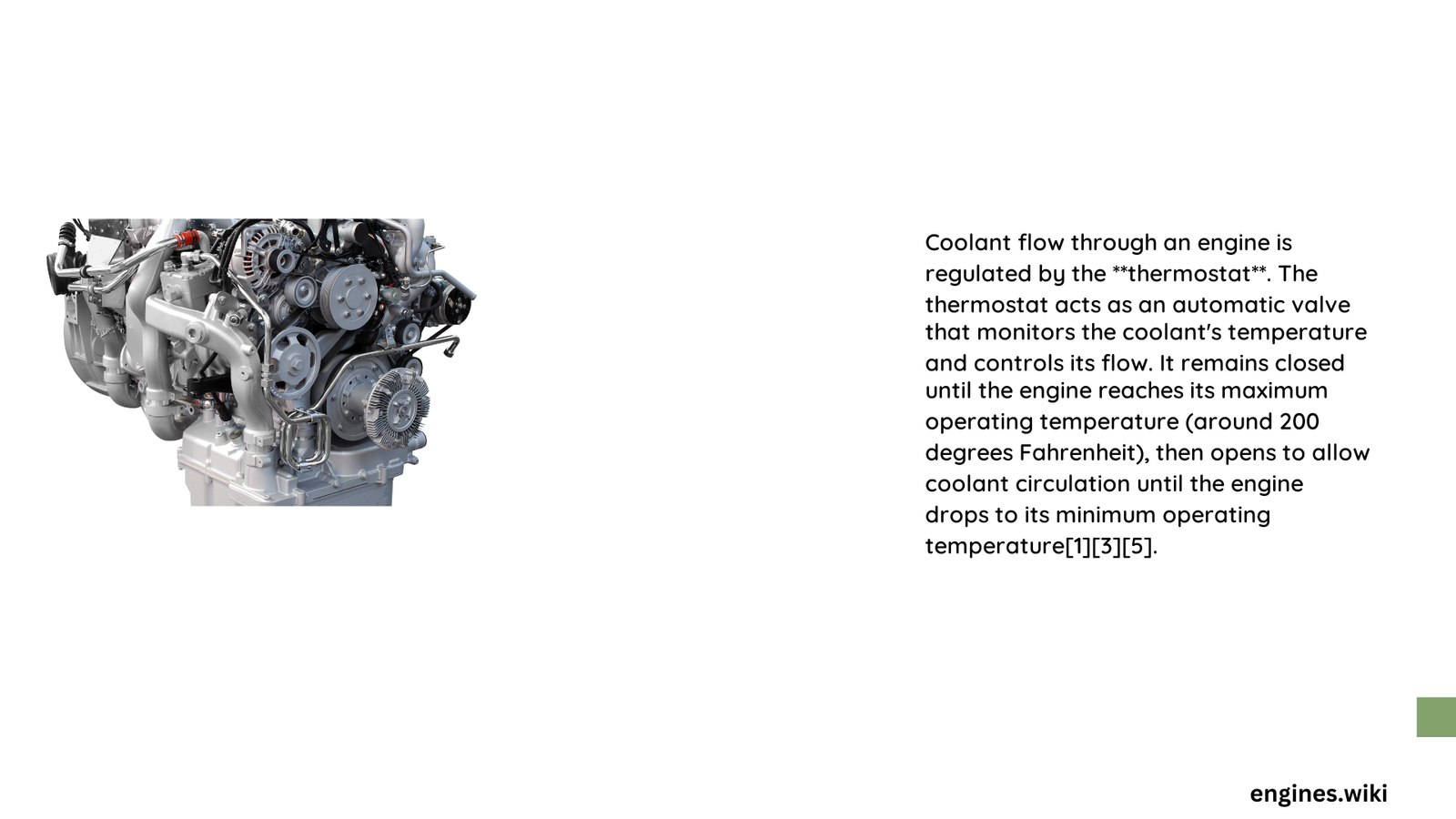Modern automotive engines rely on a complex network of components to regulate coolant flow, ensuring precise temperature management and preventing potential thermal damage. The intricate interplay between thermostats, water pumps, temperature sensors, and radiator systems creates a dynamic mechanism that maintains optimal engine operating temperatures, balancing performance, efficiency, and mechanical longevity through sophisticated temperature-responsive control strategies.
What Controls the Initial Coolant Circulation?
The thermostat serves as the primary regulator of coolant flow through an engine. This critical component acts like a temperature-sensitive valve, controlling the passage of coolant between the engine block and radiator based on precise thermal thresholds.
How Does the Thermostat Determine Coolant Flow?
The thermostat operates using a unique wax-based or electronic mechanism that responds to temperature changes:
| Temperature Range | Thermostat Action | Coolant Flow Status |
|---|---|---|
| Below 85°C | Closed | Restricted Internal Circulation |
| 85-97°C | Gradually Opening | Partial External Circulation |
| Above 97°C | Fully Open | Maximum External Circulation |
Key Operational Characteristics
- Opening Temperature: Typically between 85-97°C
- Response Mechanism: Wax pellet expansion or electronic actuator
- Circulation Control: Prevents premature coolant loss
- Temperature Tolerance: ±5°C variation tolerance
What Role Do Temperature Sensors Play?
Temperature sensors provide critical real-time data to the engine control unit (ECU), enabling precise coolant flow management:
- Measure actual coolant temperature
- Transmit electrical signals representing temperature
- Trigger cooling system adjustments
- Prevent potential overheating scenarios
How Do Water Pumps Contribute to Coolant Regulation?
Water pumps create the necessary mechanical force for coolant circulation:
- Flow Rate: 10-20 liters per minute
- Pressure Output: 5-15 PSI
- Drive Mechanism: Direct engine connection
- RPM-Dependent Performance
What Factors Influence Coolant System Efficiency?
Several interconnected factors impact coolant flow regulation:
- Engine load
- Ambient temperature
- Coolant condition
- Radiator cap pressure
- Component wear status
Why Precise Temperature Management Matters?
Effective coolant flow regulation ensures:
- Optimal engine performance
- Reduced mechanical wear
- Improved fuel efficiency
- Prevention of thermal stress
- Extended engine lifespan
Technical Insights for Automotive Professionals

Professional mechanics and engineers understand that coolant flow regulation is a nuanced process requiring sophisticated thermal management strategies. The synergy between mechanical components creates a responsive system adapting to dynamic operational conditions.
Advanced Diagnostic Considerations
When evaluating coolant flow regulation:
- Check thermostat opening temperature
- Measure sensor voltage outputs
- Inspect water pump mechanical integrity
- Verify radiator cap pressure rating
Conclusion
Understanding how coolant flow through an engine is regulated reveals the remarkable engineering behind modern automotive thermal management systems. Each component plays a crucial role in maintaining precise temperature control.
